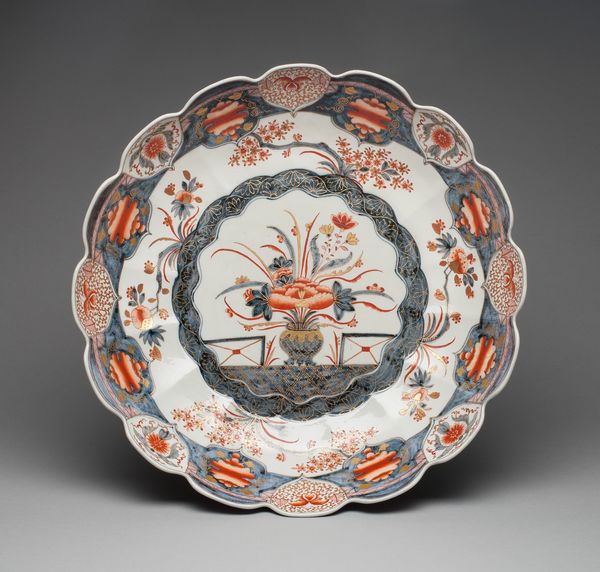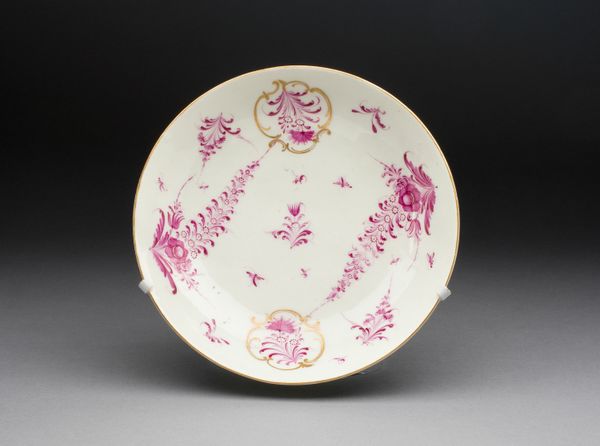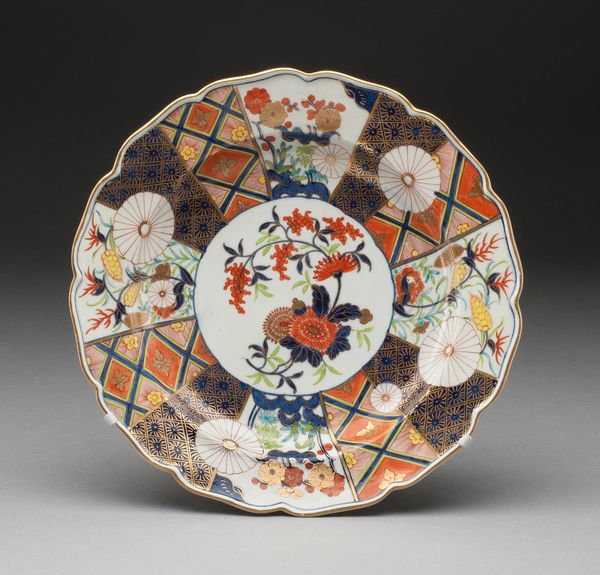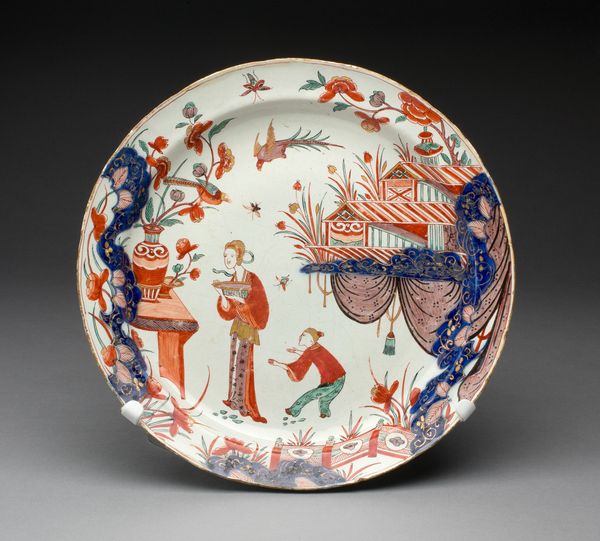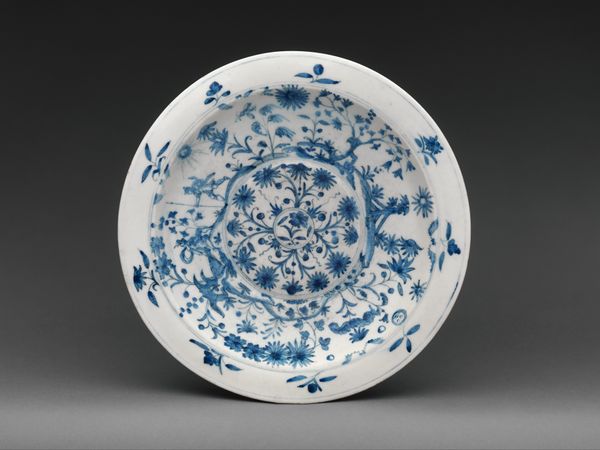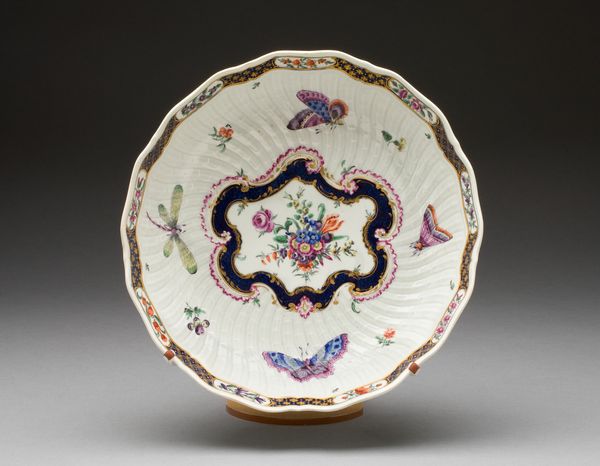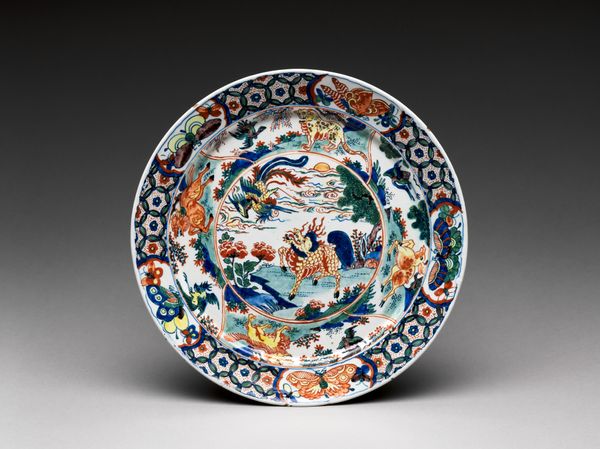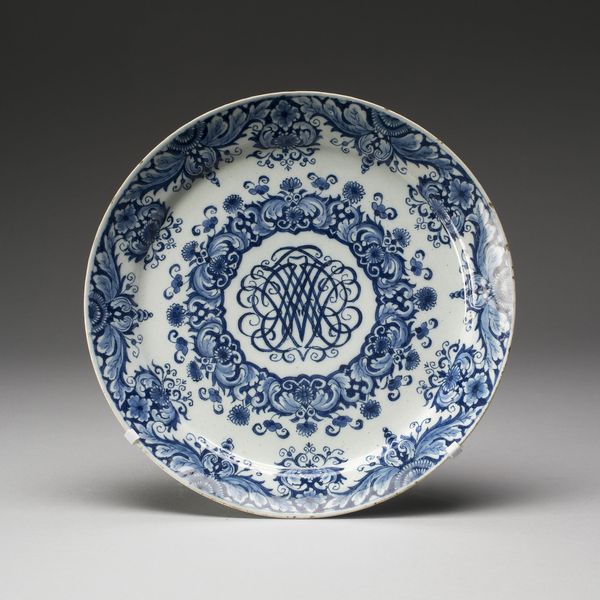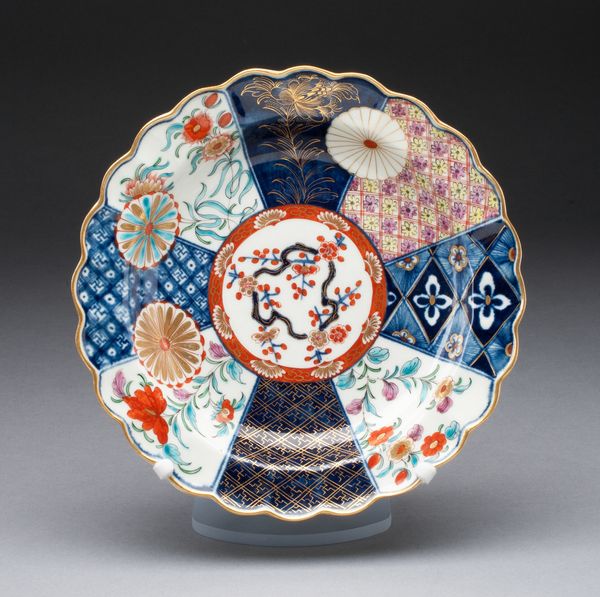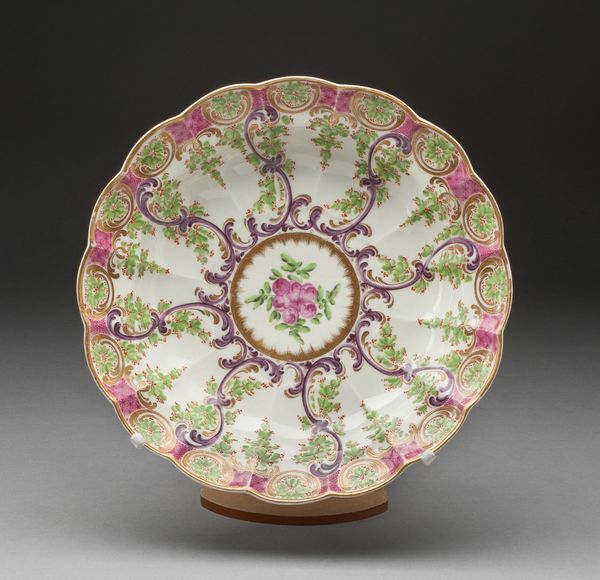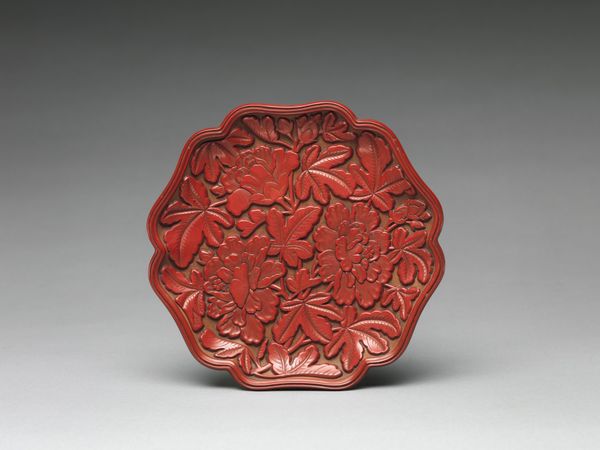
ceramic
#
arts-&-crafts-movement
#
pattern
#
ceramic
#
vessel
#
decorative-art
#
layered pattern
Dimensions: Diam. 31.4 cm (12 3/8 in.)
Copyright: Public Domain
Editor: This is "Dish" from around 1880, made by William De Morgan. It's ceramic, and features a stylized fish surrounded by smaller fish, all in a reddish-brown glaze. It feels very decorative, but almost unsettling because the main fish appears to be swallowing all the smaller fish! What's your take on it? Curator: It’s a striking piece! Given De Morgan's association with the Arts and Crafts movement, it's important to see this dish in the context of that period's rejection of industrial production and its emphasis on handcraftsmanship. The stylization you noted, with the repeating fish motif, is very intentional. It elevates a functional object into an artwork intended for contemplation and aesthetic pleasure, pushing back against mass-produced, purely utilitarian goods. Editor: So it's not just about making something beautiful, but also a statement about society? Curator: Exactly! Consider who might have purchased this. It wasn’t the masses. This was designed for a middle or upper-class clientele, one interested in art that expressed certain social values. Owning a piece like this signalled a certain taste, a certain social awareness. And the subject matter itself, the fish… how might we read that? Editor: Maybe it’s a commentary on consumption, the ‘big fish eats the little fish’ idea? Curator: Potentially. It reflects anxieties about social hierarchies, even perhaps anxieties about Victorian England itself. It's fascinating how a seemingly simple decorative object can reflect such complex social currents. What did you learn while studying it today? Editor: I never considered decorative art as having the capacity to deliver socio-political meaning, it's really interesting! Curator: Precisely! Hopefully others agree with you as they listen.
Comments
No comments
Be the first to comment and join the conversation on the ultimate creative platform.
